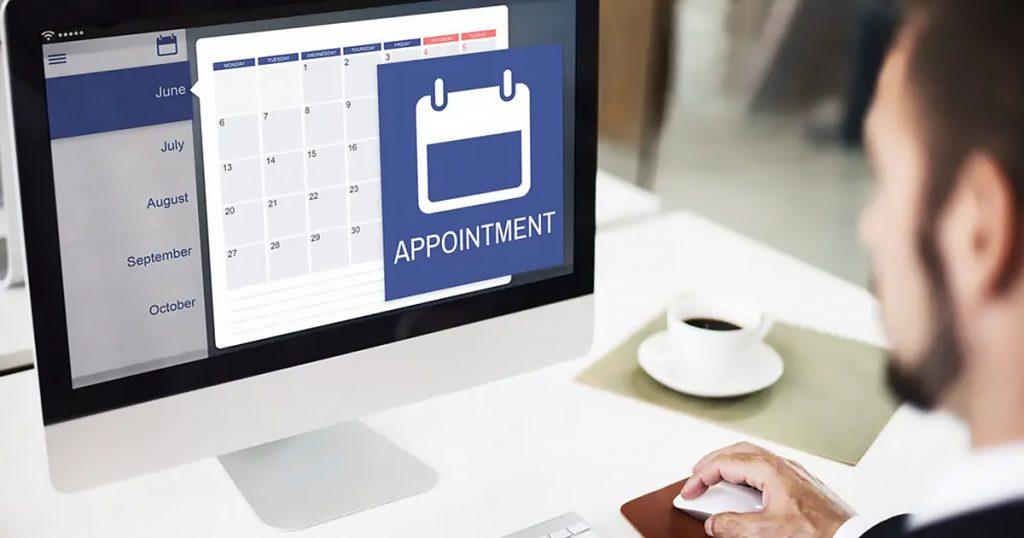In the fast-paced world of healthcare, patient appointment scheduling is a critical function that can significantly impact the efficiency of a medical practice and the satisfaction of its patients. It’s a complex task, particularly in large hospitals where hundreds of patients come in every day. For physicians, managing such a demanding process can be overwhelming, which is why this responsibility often falls on the administrative staff.
Despite their best efforts, human error can still creep into the scheduling process, leading to double-bookings, long wait times, and a host of other issues. With the advent of digital technology, however, software solutions have been developed specifically to address these challenges, improve efficiency, and streamline the overall scheduling process.
Understanding Patient Appointment Scheduling Software
Patient appointment scheduling is a crucial system that governs the smooth operation of healthcare practices. It is designed to manage patient appointments in a streamlined and efficient manner, minimizing downtime and ensuring prompt service. Here’s a closer look at some of the key components often found in patient appointment scheduling software:
Online Booking
This feature allows patients to schedule their own appointments via the internet, offering them the convenience to book at any time and from anywhere. It eliminates the need for phone calls and reduces the workload for administrative staff.
Automated Reminders
To reduce instances of missed or forgotten appointments, automated reminders are an integral component of patient appointment scheduling software. To make sure patients are aware of their upcoming appointments, these reminders can be sent by text message, phone call, or email.
Waitlist Management
During peak times, healthcare practices might face high demand for appointments. Waitlist management features allow practices to add patients to a waitlist and notify them when an earlier appointment becomes available.
Analytics for Performance Tracking
Data is a powerful tool for any organization. With analytics features, medical practices can track various performance metrics such as no-show rates, patient punctuality, and peak appointment times. This data can guide decision-making and help improve practice operations.
Calendar Integration
Most patient scheduling software integrates with calendars such as Google Calendar or Outlook. This helps keep all appointments organized and visible in one place, making it easier for both patients and providers to keep track of scheduled appointments.
Appointment Confirmation
This feature sends automatic confirmation messages to patients once they’ve successfully booked an appointment. This can help reduce uncertainty and confusion about appointment times and details.
Multi-Location Support
For healthcare practices with multiple locations, this feature allows for centralized scheduling. This means patients can book appointments at any location, and staff can view and manage these appointments from a single platform.
EHR/EMR Integration
Many scheduling systems can integrate with Electronic Health Records (EHR) or Electronic Medical Records (EMR) systems. This facilitates the easy exchange of patient data and appointment specifics, enhancing coordination and exchange of information between healthcare professionals.
The Benefits of Using Patient Appointment Scheduling Software
The following are just a few advantages of using patient appointment scheduling software:
Improved Efficiency
Administrative employees can save time and concentrate on other crucial duties by automating the scheduling process. This results in more time being available for patient care and less time being spent on manual scheduling. This efficiency can also reduce the risk of human error, such as double bookings or overlooked appointments.
Reduced No-Shows
One of the significant challenges in healthcare is missed appointments, which can disrupt the workflow and result in lost revenue. The amount of no-shows can be greatly decreased by sending automated reminders via phone calls, texts, or emails. Some systems even offer the ability to confirm appointments, ensuring that the schedule is accurate and up-to-date.
Enhanced Patient Satisfaction
Long wait times and scheduling difficulties can lead to patient dissatisfaction. By reducing wait times and offering convenient online booking options, patient satisfaction can be significantly improved. The ease with which patients can schedule, reschedule, or cancel appointments is greatly appreciated.
Better Utilization of Resources
With real-time visibility into the schedule, practices can manage their resources more effectively. This includes optimizing the use of exam rooms, equipment, and staff time. It can also help identify patterns in patient flow, enabling practices to adjust their schedules to better accommodate peak times and reduce bottlenecks.
Data-Driven Decision Making
These software solutions’ analytics can assist practices in making well-informed decisions to enhance their offerings. This can include data on peak appointment times, no-show trends, and patient demographics. Strategic planning can be aided by these insights, which can also help practices improve patient care and operations.
Revenue Increased
By reducing no-shows, optimizing resources, and improving patient satisfaction, patient scheduling software can ultimately increase a practice’s revenue. Efficient scheduling ensures maximum patient throughput, which directly impacts the bottom line.
Improved Compliance
There are features in many scheduling systems that assist practices in adhering to healthcare regulations. For instance, they can automatically schedule necessary follow-up appointments to meet care guidelines or send reminders for annual check-ups or screenings.
Enhanced Communication
Patient scheduling software often includes communication tools that make it easier to connect with patients. This can include automated appointment confirmations and reminders, as well as messaging capabilities for quick and efficient patient-staff communication.
The Potential of Patient Appointment Scheduling Software in Healthcare
It has been demonstrated that using patient appointment scheduling software greatly improves the efficacy and efficiency of medical care. These systems are specifically designed to streamline operations, reduce manual errors, and ultimately improve patient care and satisfaction.
The benefits of patient appointment scheduling software are increasingly being recognized across the healthcare sector. As reflected in market research, the demand for this technology is growing rapidly, with the market expected to expand at a Compound Annual Growth Rate (CAGR) of 10.4%% from 2023 to 2032. This growth signifies a shift toward more technologically advanced, efficient, and patient-centered approaches to healthcare management.
In conclusion, patient appointment scheduling software plays an integral role in modern healthcare settings. These systems greatly improve operational efficiency, lead to better patient care and higher revenue, and automate and optimize scheduling processes.
